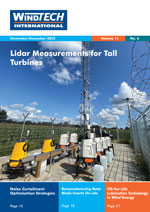A research team led by TU Delft has developed a new dynamic open-source model, called OFF, to improve understanding and optimisation of wind farm performance. Unlike conventional steady-state models, OFF captures the time-varying behaviour of turbine wakes, allowing more realistic simulations of wind flow and control strategies.
Traditional models often rely on simplified assumptions that overlook short-term variability and the transient nature of turbine interactions. OFF addresses these limitations by incorporating time-dependent dynamics. When applied to real-world data from the Hollandse Kust Noord wind farm in the Netherlands, the model demonstrated improved accuracy in predicting power output and turbine interactions, especially over short time periods of less than 20 minutes.
The model was developed by researchers from TU Delft, in collaboration with the Université catholique de Louvain in Belgium and the National Renewable Energy Laboratory in the USA. It expands on existing models such as OnWARDS, FLORIDyn and FLORIS, and supports the simulation of wind farm flow control under dynamically changing conditions.
In a case study, researchers used a 24-hour wind direction dataset based on field measurements, verifying parts of it with Large-Eddy Simulation (LES). The results showed that turbine yaw movements depend strongly on controller settings and highlighted the balance between energy gains and actuator usage. Compared with steady-state models, the dynamic wake model provided more accurate short-term power predictions and captured high-frequency fluctuations with lower error.
The OFF model forms part of the SUDOCO project, which is funded by the European Union under the Horizon Europe Programme (Grant Agreement 101122256).










